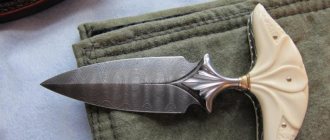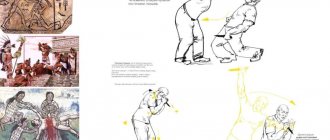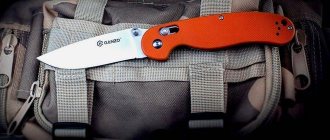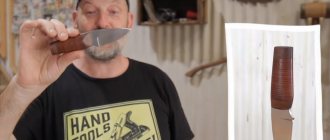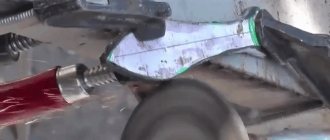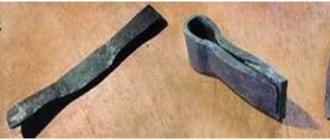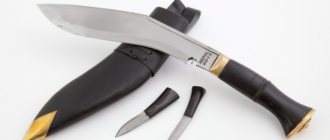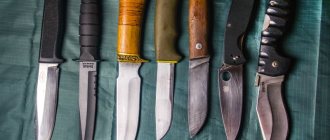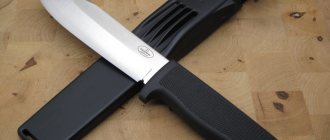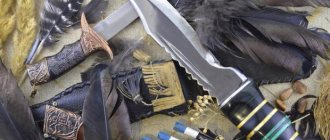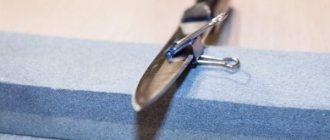If you are reading this article, then you are probably going to choose and buy a knife, but you want to study the theoretical part first, because the purchase is not on the budget.
Before you read the article, our promo code MHKNIFE gives an 8% discount on a knife over 20,000 rubles from our range! Simply enter the code in the “Discount Coupon” box when placing your order.
What do you think is the key parameter when choosing a knife? His appearance? Design? Or maybe the size? No. A knife starts with steel. The quality, functionality and durability of the future blade depends on it. It is she who determines its value. We have tried to briefly outline the main types of steels, their comparison and characteristics.
From a physicochemical point of view, steel is an alloy of iron and carbon, to which special alloying components are added. They allow you to give the metal the desired properties and, in essence, determine the type of steel. Its performance characteristics also depend on manufacturing processes, rolling and hardening.
Key material characteristics
- Hardness _ This parameter demonstrates the ability of a material not to deform under force or pressure. It is measured according to the Rockwell scale (HRC).
- Durability . This characteristic reflects the material’s resistance to chipping and cracking when used in difficult conditions. It also shows how much the blade can bend without becoming completely deformed.
- Corrosion resistance . A parameter characterizing the resistance of steel to rust, pitting and other corrosive damage caused by environmental influences.
- Wear resistance . A characteristic that determines the resistance of a material to adhesive and abrasive effects. It depends on the chemical composition of the steel and its hardness.
- Holding the cutting edge . An important parameter that determines how long the blade will remain sharp with regular use. There is no standardized way to measure this parameter. It is determined by the subjective feelings of users.
It is worth noting that the highest HRC value does not indicate high quality steel. This material will hold the cutting edge perfectly, but cracks and chips will appear on it quite quickly. Moreover, a blade that is too hard can break like glass. But steel that is too soft cannot be considered high quality - it will hardly cut most materials.
Strength has no standard school of measurement. It's also worth considering that harder steel will likely have lower strength, and vice versa.
Oddly enough, steel that is almost completely protected from corrosion reduces the overall performance of the blade. Therefore, the corrosion resistance of the working knife should be moderate.
When considering two blades with the same hardness value, the one with more carbides in its composition will be more wear-resistant.
It would seem that in order to buy the perfect knife, you need to choose a model whose blade has the maximum performance of all the characteristics described above. In practice, everything is more complicated, because if the hardness of the blade is maximum, then it will turn out to be very fragile and will not be able to withstand even minimal interaction with hard materials. If the strength is maximum, the blade will not hold an edge. Therefore, only a knife in which all of the specified parameters are balanced can be considered ideal.
Knife steel: comparative characteristics of good alloys
Each steel has its own set of characteristics that may be suitable for a particular application. Thanks to the professional skills of steel producers, the finished product will combine quality and optimal properties.
But it will not be possible to achieve very good performance in all directions at once, and therefore it is necessary to sacrifice something. For example, soft iron will become dull very quickly, but sharpening such a blade is not too difficult.
This is interesting: RSR air rifle
Harder materials may be susceptible to chipping. In a situation where the alloy has a complex chemical composition, its production will be labor-intensive, and therefore the cost of the product will become higher. All this suggests that it is impossible to choose the ideal steel for a knife; there is no material that will meet all the necessary criteria. And the one that comes close to meeting all the requirements will be much more expensive in terms of production.
Types of steels
Three types of steel are actively used in knife production today:
- instrumental _ It is used in the manufacture of cutting tools and is characterized by high hardness. Examples of tool steel are alloys D2, O1, CPM 3V and M4;
- carbonaceous _ This is a strong and durable material that is suitable for use in difficult conditions. Indispensable in the production of machetes, various knives for work and survival in difficult conditions. It is susceptible to corrosion, but is easy to sharpen and retains its sharpness for a long time. The most popular example of such steel is alloy 1095.
- stainless steel A type of carbon steel that contains at least 13% chromium and other additives that improve the performance properties of the material, but reduce its strength. Steels of this type include alloys Sandvik, VG, 400, SxxV, MoV, AUS, 154CM, CTS, etc.
Which steel to choose for a knife
The material for a hunting blade is the subject of much discussion and debate. Different experts recommend different steels, and their opinions often differ.
If you ask ten different experienced hunters which steel they think is best for a hunting knife, it is possible that we will get ten different answers.
Approximately the same situation will be with craftsmen who make knives and metallurgical technologists.
Despite the abundance of opinions and, often, polar views, there are general principles that will allow even a beginner to choose the right steel for a hunting knife. The most important thing is to understand exactly what tasks the knife will face, under what conditions it will be used, and then correlate this with the properties of a particular alloy. It is important to understand that a hunter’s knife is, as a rule, a universal tool, the tasks of which may include skinning a carcass, cutting tomatoes for a strong snack, planing wooden branches, and even chopping bones. Depending on the tasks and conditions of use in a particular case, different grades of steel may be most suitable.
Review of modern steels used in knife production
Budget steels
| Steel | Features of the composition | Characteristics | Application |
| 420 and 420J | Carbon content does not exceed 0.5%. | It has good oxidation resistance and fairly high strength. At the same time, it has low hardness, which has a bad effect on holding the cutting edge. | Mass production of kitchen knives and other tools sold at low prices. |
| AUS-6 | Low carbon content. | It has excellent anti-corrosion abilities. Quite soft. | Mass production of kitchen knives and other tools sold at low prices. |
| Steel | Features of the composition | Characteristics | Application |
| 420 and 420J | Carbon content does not exceed 0.5%. | It has good oxidation resistance and fairly high strength. At the same time, it has low hardness, which has a bad effect on holding the cutting edge. | Mass production of kitchen knives and other tools sold at low prices. |
| AUS-6 | Low carbon content. | It has excellent anti-corrosion abilities. Quite soft. | Mass production of kitchen knives and other tools sold at low prices. |
Mid-level steels
| Steel | Features of the composition | Characteristics | Application |
| 1095 | Contains about 1% carbon. | Holds the cutting edge well, is not afraid of corrosion, and is not susceptible to chipping. Can be sharpened to razor sharpness. | It is one of the most used steels due to its good performance and inexpensive production. Indispensable for the production of large knives with fixed blades used by tourists and other persons when performing heavy work. |
| 13C26 | The material is similar to 440A steel, but the percentage of chromium and carbon in it is slightly higher. | AEB-L version released by the Sandvik brand. Resistant to oxidation, quite hard. | The steel is designed specifically for razor blades. |
| 420HC | Increased carbon content. | Considered the best representative of the 420 series. Has high hardness. Due to high-quality heat treatment, it can demonstrate excellent anti-oxidation properties and confidently hold the cutting edge. | Since this steel is considered one of the best in terms of resistance to corrosion processes, it is used by many well-known manufacturers, for example, Buck. |
| 440A | Compared to 420CH, this material contains more carbon. | Hard steel that can hold a cutting edge for a long time. Afraid of corrosion. | Wide scope of application. |
Quality steels
- 14 C28 N is a stainless steel that is an improvement on 13C26 steel (corrosion resistance has been increased). In its composition, the amount of carbon was reduced and the proportion of chromium was increased, and nitrogen also appeared. The steel is produced by the Sandvik brand from Sweden and is distinguished by the ability to sharpen to a razor-like finish. The Kershaw brand is very fond of this steel.
- 8 Cr13 MoV . Chinese material, the characteristics of which are similar to those of AUS-8 steel. But steel from China contains more carbon. Valued for its balanced price-quality combination, it is actively used by Spyderco and other well-known brands.
- CTS- BD1 . Material developed by the American brand Carpenter specifically for Spyderco. Similar to AUS-8 and 8Cr13MoV materials, but superior to them in terms of cutting edge retention. Moreover, the steel in question, due to its high chromium content, better resists corrosion. It is easy to sharpen (it contains small carbides), although the sharpening time is inferior to materials with large carbides (for example, G-10).
- AUS-8 . Durable Japanese steel, similar in properties to 440C material. It differs from the latter in lower hardness and greater corrosion resistance. Effortlessly sharpens to a razor-sharp state, although it retains the cutting edge worse than its older comrades, which contain more chromium.
- 440 C. _ A universal material that has long been considered the leader among knife steels. It lost its position only with the advent of super steels. Today it is used to produce tools of average cost, characterized by exceptional corrosion resistance (contains the maximum carbon and chromium among steels in this subgroup), fairly high wear resistance and hardness. It keeps the cutting edge sharp better than 420HC steel, and is no less easy to sharpen.
High quality steel
| Steel | Features of the composition | Characteristics | Application |
| N680 | 17% chromium; 0.2% nitrogen | Excellent anti-corrosion capabilities. Easy to sharpen. Holds the cutting edge well. It is considered an affordable modification of the H1, but in terms of edge preservation it is significantly inferior to the ATS-34 and 154CM. | Suitable for knives and other products that are often exposed to salt water. |
| H1 | High content of anti-corrosion components. | Excellent corrosion resistance and almost no rust. But it doesn't hold the edge very well. | This type of steel makes the best knives for diving. But for EDC it is better to use a different material. |
| VG-10 | Contains strength-increasing vanadium. It exceeds steel 154CM and ATS-34 in chromium content. | It features high levels of anti-corrosion resistance and strength. Has sufficient strength. It retains the sharpness of the blade quite well, but there is a risk of chipping since the steel is brittle. Overall, a good, and most importantly, time-tested option. | It is actively used by the Spyderco brand and other companies operating in a similar price segment. |
| D2 | It is called “semi-stainless” because it contains less chromium than analogues, but still resists corrosion well. | It surpasses steel 154CM and ATS-34 in hardness and holds an edge well. In terms of strength, it is confidently “average” and does not sharpen well. | Suitable for the production of high-quality and not too expensive knives. |
| 154CM | Contains molybdenum. The amount of chromium is significantly less than that of 440C steel. | It is considered an improved version of the 440C material. It has equally outstanding resistance to oxidation and is distinguished by decent strength. Holds the edge perfectly. Excellent sharpening using abrasives. | Widely used by leading manufacturers, including Benchmade. |
| ATS-34 | The composition is similar to material 154CM. | Japanese equivalent 154CM. Characterized by high quality. Compared to 440C, it has a greater tendency to corrosion, but holds the edge better. | A popular steel among many knifemakers. |
Premium steel
| Steel | Features of the composition | Characteristics | Application |
| CPM S30V | Contains vanadium carbides and niobium. | It is not afraid of corrosion and holds the edge perfectly. Has a very hard alloy matrix. Thanks to niobium, it is easy to process. The balance of hardness and strength is almost perfect. | American manufacturers love to use this steel to produce professional kitchen utensils and various models of pocket knives. |
| CPM S35VN | It has a fine-grained structure. Contains niobium. | This steel is an improved variation of the incredibly popular S30V material. It is distinguished by exceptional strength and easy sharpening, oxidation resistance and the ability to confidently hold an edge. | It is used as widely as S30V steel. It is considered an example of super steels. |
| CPM M4 | High content of molybdenum, tungsten, carbon and vanadium. Little chrome. | High performance carbon material exhibiting superior edge holding ability. It is characterized by high strength, wear resistance and amenability to processing. Due to the small amount of chromium in the composition, it is afraid of corrosion. Difficult to sharpen. | A good option for those cases when the knife must be durable and wear-resistant at the same time. |

Ultra premium steel
- CTS- XHP is a material from an American brand that appeared on the market not so long ago. It has a hardness of 61 HRC and the ability to hold an edge confidently - better than S30V material. This steel is produced from powder with very fine grains. In many ways it is similar to D2 material, but it resists corrosion much more effectively. Sharpening requires some effort.
- Elmax . Another powder steel, which contains a high content of molybdenum, chromium and vanadium. It is not afraid of oxidizing substances, is characterized by exceptional wear resistance and long-term edge retention. Steel belongs to the class of stainless steel, but its properties are in many ways similar to carbon materials. Sharpening is relatively easy. Elmax is rightfully considered one of the best steels in the world. It is used by many premium manufacturers, including Bohler.
- ZDP-189 is a Hitachi steel with a very high percentage of chromium and carbon in the alloy. Its hardness reaches 64 HRC, as a result, the cutting edge is held perfectly. But sharpening requires considerable effort, as does corrosion protection - the resistance of this material to oxidative processes is significantly lower than that of S30V.
- M390 is a third generation steel containing tungsten, molybdenum, vanadium and chromium. It holds the edge confidently and resists corrosion, is wear-resistant and hard. After heat treatment, the last parameter can reach a value of 60-62 HRC.
- CPM S90 V is an expensive material with a high carbon content. Also includes vanadium, which is three times more than S30V and Elmax. The steel is incredibly resistant to abrasions and wear, and holds the cutting edge perfectly. But it is not easy to machine it, just like other steels of this class.
Characteristics of steel grades
A knife is a tool that all people use absolutely every day. Kitchen, travel, hiking - a modern person cannot do anywhere without a good blade. This is one of the oldest inventions that has passed through the centuries without changing much in its form. But over time, production materials changed; such tools were made from a variety of alloys. It is necessary to look at the most famous and popular steel grades, as well as their characteristics. After this, you can understand which brand is most suitable for making knives.
- Brand 40X13 . If you study the most famous models of domestic kitchen knives and analyze what kind of steel is used in them, you can understand that it is 40X13. This material will be ideal for kitchen use due to its good sharpening properties and resistance to rust. Material 420, which was discussed above, is a foreign analogue of this metal. This brand can be used to make not only kitchen knives. Many surgical instruments are also made of medical steel (this is a fairly well-known name for such a material).
- Brand 65X13 . What kind of steel can be used to make very high-quality knives, and therefore they are often used for many Russian products. The blade will never rust. And all because this material has very good anti-corrosion characteristics. Service life - decades.
- Brand 50X14 MF . In modern times, this variety has become very popular in the production of cutting tools. The characteristics are very similar to the previous version, but have several shortcomings. Very often, this alloy is used for the manufacture of surgical instruments, as well as high-quality household, industrial and even military knives. If you carry out the correct heat treatment, you can get very durable products.
- 95Х18 . Stainless steel, which has several processing requirements. If you follow all the nuances during manufacturing, you get a flexible and durable knife. Such blades will not become dull for a long time. But perhaps corrosion will appear there if the blade is exposed to moisture for a long time.
- 65 G. This is spring steel. Anyone who once wanted to make a knife with their own hands knows about this material, since it is very popular in discussions in various forums. Kitchen utensils are very rarely made from such an alloy, since steel is susceptible to corrosion. But they are trying to solve this problem by adding a noble coating.
- 420. This brand is the most affordable and most widespread in the world. That is why Chinese manufacturers often use it. This is stainless steel. If you achieve the right heat treatment, you can achieve amazing performance. That is why foreign manufacturers often use this brand. This variety suggests that the chemical composition is not the main characteristic. The service life of such material is very long, even despite its low cost.
- 420NS . A very famous high carbon steel from which knives are made. Many well-known brands choose this type of steel because it is easy to process and has anti-corrosion properties. The blades will very rarely become dull. But to sharpen them, you need to put in a lot of effort.
- M390. The brand has high cutting properties. Very often used for making blades. This material is still actively used for surgical instruments, which have significant requirements. Due to the addition of chromium, this steel is not susceptible to corrosion. It should also be noted that M390 is used not only to create knives, but also for the manufacture of production devices and machines.
- 440. There are several varieties, which are designated "A" "B" and "C". Particular attention should be paid to the 440C brand, which is very high-tech. Each variety has its own carbon content: 0.75, 0.90 and 1.20%, respectively.
- A.U.S. This is a Japanese variety of alloy 440. As in the previous version, there are varieties that differ in carbon content.
X12MF. It has very high wear resistance and strength. Knives will become rusty over time, so it is better not to use them in the kitchen. Steel has significant cutting properties and does not lose its sharpness for a long time. Knives are often used by hunters who choose a very high-quality tool.
- ZPD-189. The Japanese are very fond of this material, because it combines viscosity, high strength, and hardness. The Japanese use this steel to make their best knives. The price of the product will be quite high. That is why there are very few knives made of such steel on the domestic market.
- S30V. This material was first produced by Dick Barber and Chris Reeve. Vanadium carbide is used in production. Thanks to this, great strength can be achieved. A similar development is used by many modern manufacturers.
- H-1. A very famous brand that is used for making knives. They can even be used in the sea, where there is constant exposure to salt water. Very difficult to process. Knives from this material are made for sailors.
- AT S-34 and 154. Very high-tech materials. Steel 154 is an American development, has high characteristics and an equally high price. ATS-34 was developed by Hitachi. These materials have leading positions throughout the world.
A few words about powder steel
In the descriptions above, you probably noticed the abbreviation CPM in the names of some steels. This abbreviation can be translated into Russian as Crucible powder metallurgy. Crucible is the name of an American brand that produces tool steels of exceptional quality.
The company uses a special technology, as a result of which molten steel is processed into fine powder. It is pressed into forms prepared in advance, in which it is subsequently baked. It is easy to introduce various additives into such powder, which makes it possible to produce steel with certain operational parameters.
Diamond Myth
One of the common recommendations from hunters is XB5 steel, also known as diamond. Steel, about which many legends are told, was used in jewelry. The high hardness of this alloy allows not only to separate the skin, but also to easily cut through tendons and even cut bones. Moreover, the ability to maintain an edge of this alloy is such that after planing the bones with a blade made from this steel, it will be possible to thinly slice a tomato.
This is interesting: Emery for sharpening knives
As with most high carbon steels, the downside of diamond is its poor corrosion resistance. After the first use, the top layer of the blade may darken. The issue, of course, can be solved by cleaning and etching in a sprite, but rust and the need for constant maintenance can become a problem for many. Another significant problem is the low ductility of the blade, which leads to sensitivity to fracture loads. It is not recommended to cut anything with such blades because the edge will not hold the impact load well. Separation of carcass bones in the area of large joints can also be fatal for a “diamond” blade.
Let's sum it up
As you can see, perfect steel does not exist. But for each task there is its own optimal version of the metal alloy. This is the one that should be chosen. We also advise you to pay attention to other characteristics of the finished product: its design, construction, workmanship, etc. After all, in fact, all modern knife steels fully satisfy the needs of the average user. The difference is noticeable only to professionals.
This article covers the topic at hand, however, if you still have additional questions, please contact us for advice and help with your choice by phone or leave a request on the website.
Damascus steel
Every professional will say that the best steel for a knife today is Damascus or damask steel. Most people have heard these names. And all because these alloys have become known since ancient times, even then they showed their wonderful qualities for blades.
Even many adventure films mention such materials, and therefore they can be considered the most famous around the world.
All the masters said that the best knives are made of Damascus steel. The quality of a damask steel blade will depend on the professional qualities of the manufacturer, as well as proper heat treatment and grinding. If we compare these two types of material, it is necessary to note the superiority of the first in terms of strength. But in cutting qualities they are equal.
About Damascus steel
When asked which steel is the best for a hunting knife, many would answer Damascus. Indeed, its hardness reaches 60 HRC. Judging by numerous reviews from owners, the knives have increased strength and high cutting properties. Primary sharpening remains on the cutting edge for a long time. Due to the fact that this steel has a non-uniform structure, intricate patterns are formed on the surface of the blades, making the knives look very impressive.
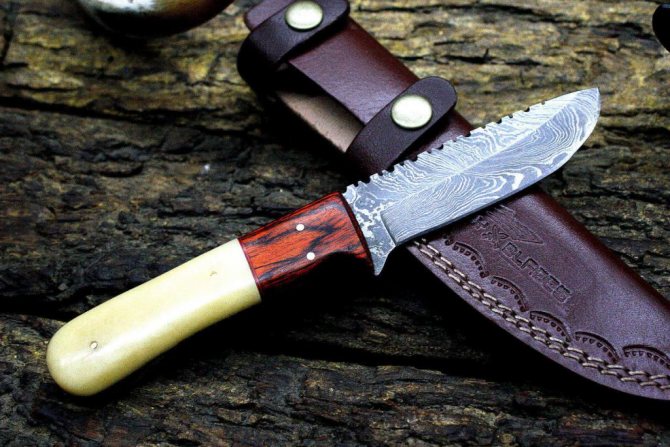
Despite the presence of undeniable advantages, Damascus steel is not without one drawback. The disadvantage of the material is that it is not resistant to corrosion processes. Therefore, anyone who has purchased a hunting knife made of Damascus steel will have to thoroughly wipe the blade dry each time after use. Special oils that are used to rub the blade against moisture will also not hurt. According to experts, such cutting products are considered rare. What is the best steel for a hunting knife? More on this below.
About the hardness of the blade
For those who are interested in what kind of steel the best hunting knives are made of, experts recommend paying attention to its hardness indicator. Since a hunting knife is used in extreme conditions, it must be razor-edged, but not inferior to a small hatchet. It is desirable that the hardness index ranges from 55 to 60 HRC. Due to the fact that this steel has a large amount of carbon, the knife will hold an edge for a long time. Judging by numerous reviews from owners, the cutting edge will not become dull even after long-term use. On the other hand, according to the owners, this steel for hunting knives is very difficult to process. Therefore, in a camping environment, a high hardness index becomes a problem. According to experts, the best steel for a hunting knife is one that, due to its high carbon content, does not become too brittle and does not lose its ductility.
Powder steel manufacturing technology
Most of the steels, from which almost 90% of the blades presented on store shelves are currently produced, upon simplified consideration, have almost the same structure, mostly consisting of martensite and carbides. Residual austenite, non-metallic inclusions, etc. can also be added here. It is no secret that the use of carbides in knife steel is due to the fact that the carbides themselves are harder and more brittle than the martensitic matrix, but at the same time they significantly increase the wear resistance of the steel and worsen (beyond a certain limit) the mechanical characteristics. The deterioration especially affected the strength and toughness indicators. In addition, the overall degree of reduction in “strength” properties directly depends on the parameters of the carbide phase. Especially on its quantity, type, size of the carbides themselves and their clusters and the uniformity of their distribution in the overall structure.
It is worth noting the fact that well-defined carbide heterogeneity (this is the term used to characterize the “quality” of the carbide phase and its distribution) creates problems when grinding metal, and also increases the likelihood of the appearance of leads and cracks. At the same time, knifemakers are well aware that steels containing a large number of large and unevenly distributed carbides are much less susceptible to hot deformation, and, starting with a certain degree of carbide heterogeneity, the material almost completely stops deforming under normal conditions.
Based on the above aspects, when creating a knife, craftsmen find themselves in a kind of vicious circle - to increase durability, they need to increase the amount of the carbide phase, but at the same time, in order to maintain the required mechanical characteristics, they have to reduce its amount and improve its distribution. Due to the fact that the amount and type of carbide phase directly depend on the composition of the steel, which is based on the carbon content and the amount and type of alloying elements, in “classical” grades of knife steel there is a certain alloying limit, upon reaching which the steel still has a minimum acceptable mechanical and technological properties. And accordingly, there is a limit to the durability characteristics.
Popular brands
There are steel grades that are very different in composition and characteristics, used in knife production. It’s easy for an expert to make a choice; he definitely sees the tasks for which the product is being created. It is quite difficult for someone with little knowledge of these matters to select the necessary brand. Below are the most famous brands of Russian steel found on the market:
420
This is a relatively inexpensive alloy for the production of blades, with a carbon content of 0.5%. It can be sharpened without much effort, it is characterized by good resistance to corrosion processes and a long service life.

Knife with blade made of 420 steel.
440A
The steel comes from America and has good corrosion resistance. Hardens to 56 HRC. Mainly used to create inexpensive models. A very good alloy for everyday use.

Steel 440A.
440B
Similar in performance to 420A. Analogues are the following steels: 95x18, AUS-8, 1.4112.

Knife with blade made of 440B steel.
440C
It is considered the best alloy of the 420 series. Blades from it are of slightly better quality, but the price of this alloy is an order of magnitude higher than its counterparts. It is a wear-resistant and hard metal.
Knife made of 440C steel.
AUS-4
Country of origin: Japan. It is used relatively rarely for knives; cheap serial folding and kitchen samples are made from it.
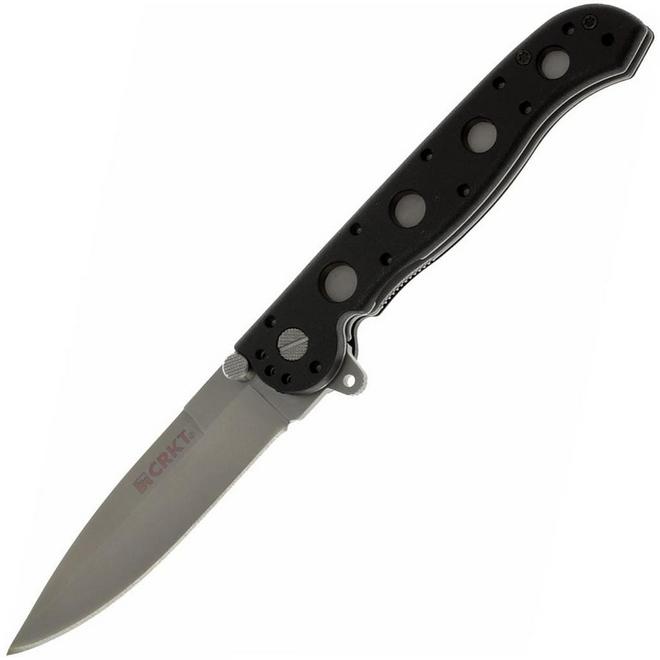
Knife made of AUS-4 steel.
AUS-6
The average hardening rate is 55-57 units. The alloy is classified as analogous to 440A.
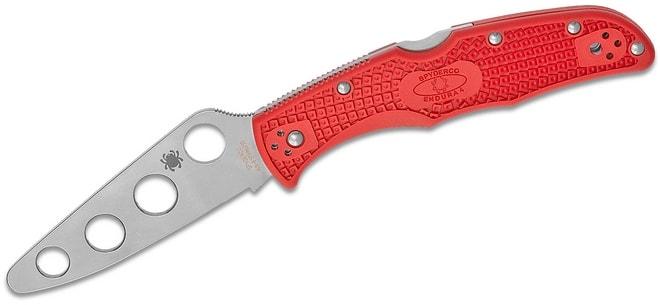
Knife with AUS-6 blade.
AUS-8
The Japanese brand combines a balance between resistance to wear and corrosion processes. It is widely known in knifemaking due to its properties and low cost. Typically hardening reaches 58 HRC.
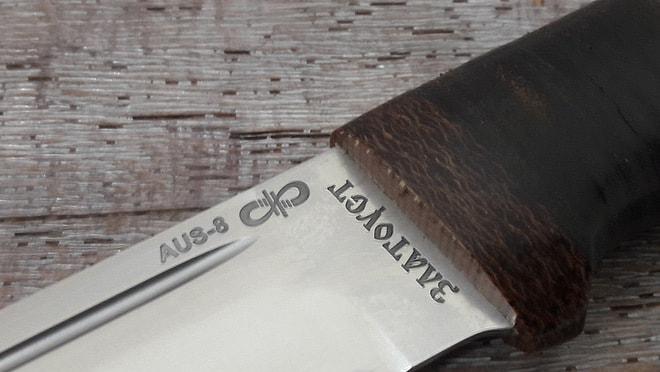
Steel marking AUS-8 on the Zlatoust knife.
AUS-10
Japanese steel grade, analogous to 440C, ideally meeting all the requirements for creating high-quality blades. It has been very popular for many years.
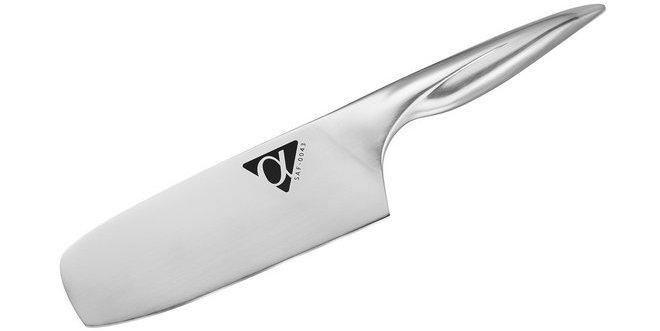
Japanese kitchen knife made of AUS-10 steel.
N-1
Chromium-nickel steel holds factory sharpening for a long time and withstands even harsh use. The hardness of the metal is within the range of 58-60 HRC.
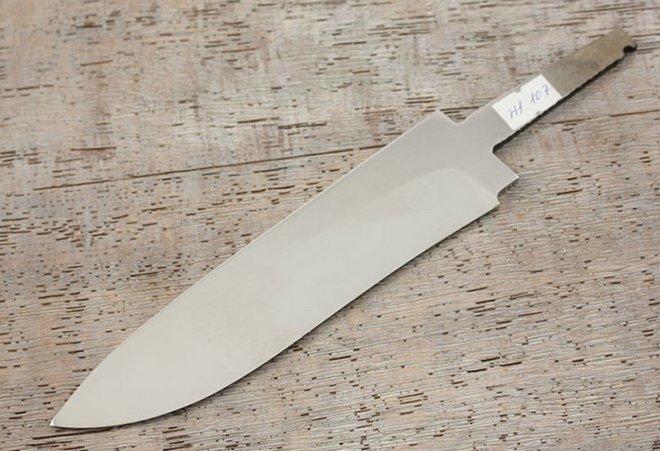
Blade made of N-1 steel.
Inox
The alloy has a good rust resistance coefficient. Demonstrates itself perfectly in everyday use. The alloy is hardened to 56 HRC. It is mainly used to produce combat models, knives for diving, and hunting.

Folding knife Opinel 12, Inox steel.

